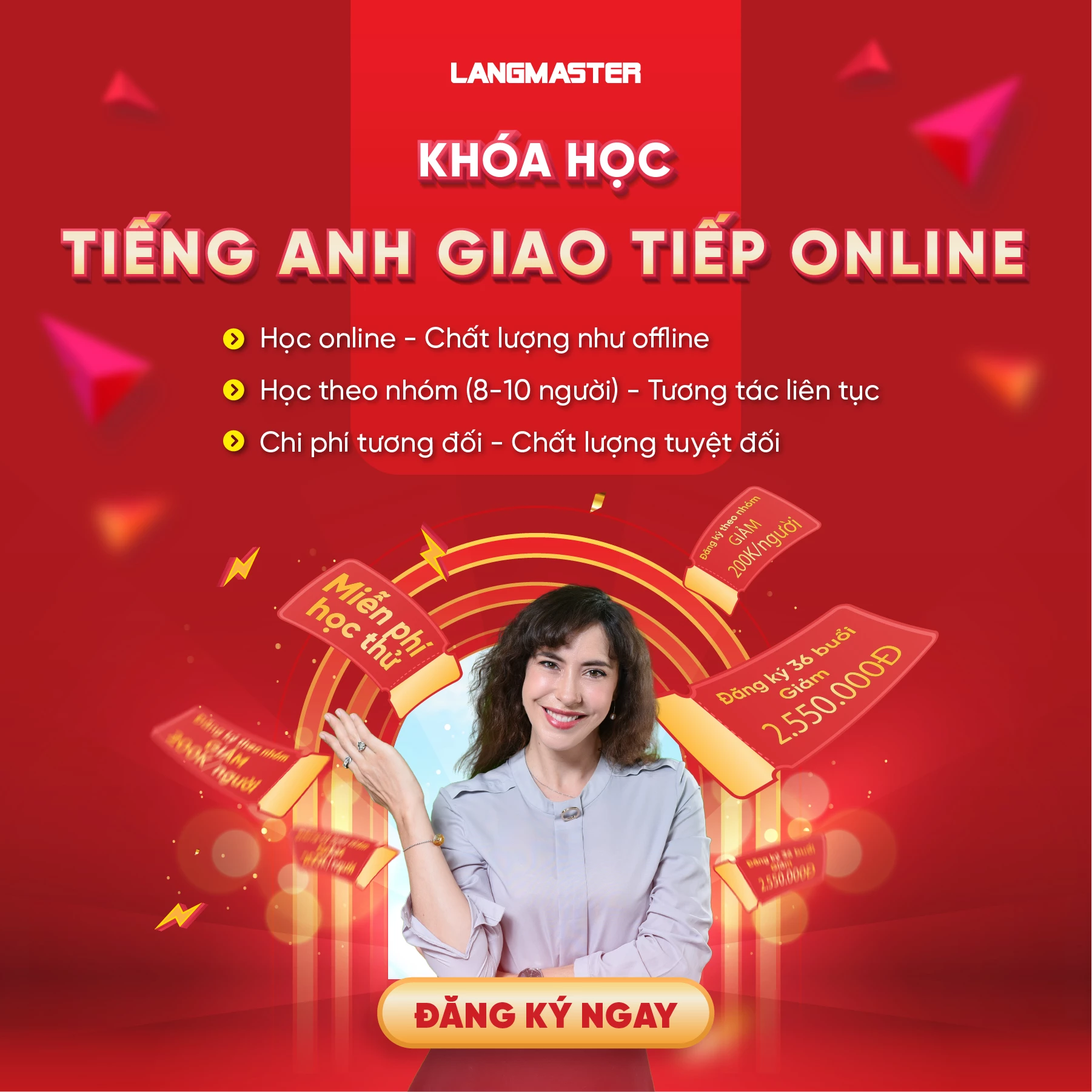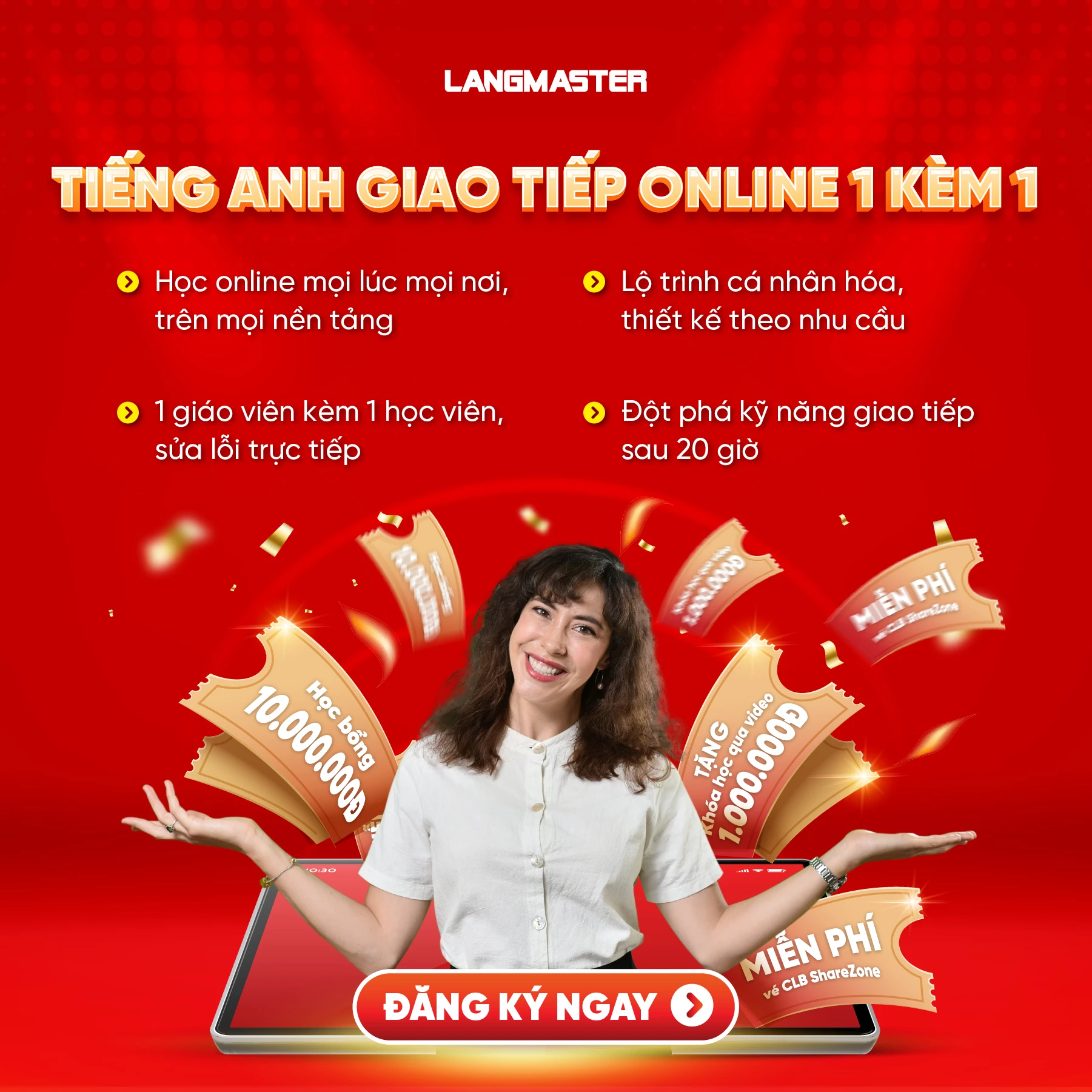Tiếng anh giao tiếp online
Giải đề IELTS Reading: Marketing and the information age [Full answers]
Mục lục [Ẩn]
Luyện đề thi thật luôn là cách tối ưu để nâng cao kỹ năng IELTS Reading. Bài viết này sẽ giúp bạn giải đề thi thật IELTS Reading “Marketing and the information age” với đầy đủ đề bài, câu hỏi, đáp án chi tiết kèm giải thích rõ ràng. Đây sẽ là tài liệu hữu ích để bạn ôn luyện và nâng cao kỹ năng Reading, sẵn sàng chinh phục band điểm mục tiêu trong kỳ thi IELTS.
1. Đề thi thật IELTS Reading “Marketing and the information age”
Marketing and the Information Age
For the early practitioners of marketing in the late 19th and early 20th centuries, the business of selling was simply a matter of continually finding new customers. By contrast, marketing managers in the current era recognise the importance of gathering information about the market and about potential customers. They recognise that if companies are to be profitable, customers must gain and retain their perceptions of value from the brands they buy over a long time frame, rather than from a single transaction. This also means that customers must see value in returning continually to the stores where they shop, as well as to the service providers they deal with.
Marketing practitioners and marketing scientists have never worked more closely than they currently do. There are many reasons for this, including the fact that this is the information age where convergence in telecommunications, media and technology is causing old ways to be challenged, and new methods and tools to be tested. Customer expectations have risen as new technologies allow new approaches. For instance, the subscriber-TV music channel Channel [V] encourages its viewers to sign up for text messages and email alerts that tell them when their favourite artists and songs are about to be broadcast. Competitive advantage lies in being able to recognise which customers can be given greater attention, not just because they demand it but because it makes commercial sense to provide high levels of product quality and service.
Modern marketing information systems rely on information technology to enable marketing intelligence to be gathered and to store and analyse marketing research information. While some of the information used is gathered by government bodies such as the Australian Bureau of Statistics and Statistics New Zealand, most of it is purposefully gathered by marketing organisations for client companies. In the process, computer technology is used to manipulate the data and then to present the information in such a way that executives can readily identify any problems or issues, and quickly arrive at solutions.
In order to produce superior value and satisfaction for customers, marketing managers need information at almost every turn. They need information about customers—end-users and resellers— as well as competitors and governmental and other forces in the marketplace. One marketing executive put it this way: "To manage a business well is to manage its future, and to manage the future is to manage information." Increasingly, marketers are viewing information not just as an input for making better decisions but also as an important strategic asset and marketing tool. As household incomes increase, choice widens and buyers become better discriminating, so sellers need information about how buyers respond to different products and advertising campaigns.
The supply of information has also increased greatly. It has been suggested by the futurist and best-selling author John Naisbitt that the United States and, by observation, developed countries such as Australia, New Zealand, and Singapore are moving from industrial to information-based economies. These post-industrial economies earn 70-80% of their Gross Domestic Product from services, and have entered what some commentators have termed the "Information Age" or the "Information Technology Era".
One study found that with all the information now available through supermarket scanners, a packaged goods product controller is bombarded with one million to one billion new numbers each week. As Naisbitt points out: "Running out of information is not a problem, but drowning in it is." Yet marketers frequently complain that they lack information of the right kind but have plenty of the wrong kind, or they claim that marketing information is so widely spread throughout the organisation that it takes great effort to locate even simple facts. In addition, subordinates may withhold information they believe will reflect badly on their performance, and important information often arrives too late to be useful, or on-time information is not accurate. So marketing managers need better information. Although marketing organisations have greater capacity to provide managers with information, they often do not use it well. As a result, many marketing organisations are now studying their managers' information needs and designing information systems specifically to meet those needs.
One solution is to use a Marketing Information System (MIS). This consists of people, equipment, and procedures which, when put together, are able to gather, analyse, evaluate and distribute needed, timely, and accurate information to marketing decision-makers. The MIS begins and ends with marketing managers. First, it interacts with these managers to assess the information needs they have. Next, it develops the needed information from internal records, marketing intelligence activities, and the research process. The analysis unit processes the data to make it more useful and, finally, the MIS distributes it to managers in the right form and at the right time to help them make better marketing decisions.
However, the costs of obtaining, processing, storing, and delivering information can mount quickly. In some cases, additional information will do little to change or improve a manager's decision, or the costs of the information will exceed the returns from the improved decision. For example, if an organisation estimates that launching a new product without any further information will yield a profit of $500,000, then it would be foolish to spend $30,000 for additional information that would increase the profit to only $525,000. By itself, information is valueless—its value comes from its use.
Questions 27-31
Which paragraph contains the following information?
Write the correct letter, A-H, in boxes 27-31 on your answer sheet.
- The fact that there may be too much information to cope with
- The relevance of generating repeat business
- An example of personalised marketing
- An illustration of a situation where commissioning new might not be advisable
- How the greater wealth of customers enables them to select from a broader range of products
Questions 32-36
Do the following statements agree with the claims of the writer in Reading Passage?
In boxes 32-36 on your answer sheet, write:
YES if the statement agrees with the claims of the writer
NO if the statement contradicts the claims of the writer
NOT GIVEN if it is impossible to say what the writer thinks about this
- The majority of marketing statistics are gathered by government agencies.
- The move from an industrial to an information-based economy has happened more quickly in New Zealand than in Australia.
- Employees sometimes hide information that gives a poor impression of them.
- Managers frequently fail to make good use of the information they receive.
- Marketing information has to be used to be valuable.
Questions 37-40
Complete the Bow-chart below
Choose NO MORE THAN TWO WORDS from the passage for each answer.
White your answers in boxes 37-40 on your answer sheet.

>>> XEM THÊM:
- Giải đề IELTS Reading: Computer Games [Full answers]
- Giải đề IELTS Reading: Stepwells [Full answers]
2. Đáp án đề IELTS Reading “Marketing and the information age”
|
27. F |
34. Yes |
|
28. A |
35. Yes |
|
29. B |
36. yes |
|
30. H |
37. marketing managers |
|
31. D |
38. information needs |
|
32. No |
39. internal records |
|
33. Not given |
40. analysis unit |

Đáp án chi tiết câu 27 - 31
Câu 27: The fact that there may be too much information to cope with
“Running out of information is not a problem, but drowning in it is.” (đoạn F)
=> Rõ ràng có quá nhiều thông tin khiến người quản lý khó xử lý.
Đáp án: F
Câu 28: The relevance of generating repeat business
“customers must see value in returning continually to the stores where they shop” (đoạn A)
=> Doanh nghiệp cần khách hàng quay lại mua nhiều lần, không chỉ giao dịch một lần.
Đáp án: A
Câu 29: An example of personalised marketing
“Channel [V] encourages its viewers to sign up for text messages and email alerts that tell them when their favourite artists and songs are about to be broadcast.” (đoạn B)
=> Đây là ví dụ điển hình về marketing cá nhân hóa theo sở thích.
Đáp án: B
Câu 30: An illustration of a situation where commissioning new might not be advisable
“it would be foolish to spend $30,000 for additional information that would increase the profit to only $525,000.” (đoạn H)
=> Thông tin mới không phải lúc nào cũng đáng để bỏ chi phí thu thập.
Đáp án: H
Câu 31: How the greater wealth of customers enables them to select from a broader range of products
“As household incomes increase, choice widens and buyers become better discriminating.” (đoạn D)
=> Khi thu nhập tăng, khách hàng có nhiều lựa chọn sản phẩm hơn.
Đáp án: D
Đáp án chi tiết 32 - 36
Câu 32: The majority of marketing statistics are gathered by government agencies.
“most of it is purposefully gathered by marketing organisations for client companies.” (đoạn C)
=> Phần lớn do công ty marketing thu thập, không phải chính phủ.
Đáp án: NO
Câu 33: The move from an industrial to an information-based economy has happened more quickly in New Zealand than in Australia.
Trong bài chỉ nói cả hai nước đã chuyển sang kinh tế thông tin, không hề so sánh tốc độ.
Đáp án: NOT GIVEN
Câu 34: Employees sometimes hide information that gives a poor impression of them.
“subordinates may withhold information they believe will reflect badly on their performance.” (đoạn F)
=> Nhân viên đôi khi giấu thông tin xấu về họ.
Đáp án: YES
Câu 35: Managers frequently fail to make good use of the information they receive.
“although marketing organisations have greater capacity to provide managers with information, they often do not use it well.” (đoạn F)
=> Quản lý thường không tận dụng tốt thông tin.
Đáp án: YES
Câu 36: Marketing information has to be used to be valuable.
“By itself, information is valueless—its value comes from its use.” (đoạn H)
=> Thông tin chỉ có giá trị khi được sử dụng.
Đáp án: YES
Đáp án chi tiết 37 - 40
Câu 37: “The MIS begins and ends with marketing managers.” (đoạn G)
=> Đáp án: marketing managers
Câu 38: “First, it interacts with these managers to assess the information needs they have.” (đoạn G)
=> Đáp án: information needs
Câu 39: “Next, it develops the needed information from internal records, marketing intelligence activities, and the research process.” (đoạn G)
=> Đáp án: internal records
Câu 40: “The analysis unit processes the data to make it more useful.” (đoạn G)
=> Đáp án: analysis unit
3. Từ vựng quan trọng trong bài IELTS Reading “Marketing and the information age”
Khi chuẩn bị cho kỳ thi IELTS Reading, việc phát triển vốn từ vựng theo kế hoạch học tập rõ ràng chính là chìa khóa để nâng cao band điểm. Một trong những cách hiệu quả nhất là giải đề IELTS Reading thường xuyên, kết hợp với luyện tập từ vựng trong các bài đọc học thuật. Dưới đây là tổng hợp từ vựng quan trong trong bài đọc “Marketing and the information age” giúp bạn tăng tốc độ đọc hiểu, cải thiện kỹ năng phân tích và từng bước nâng cao kết quả khi làm bài thi thật.
|
Từ/Cụm từ |
Nghĩa |
Ví dụ trong bài |
|
practitioners of marketing |
người thực hành, làm trong ngành marketing |
“For the early practitioners of marketing in the late 19th and early 20th centuries…” |
|
perceptions of value |
nhận thức về giá trị |
“…customers must gain and retain their perceptions of value from the brands they buy…” |
|
service providers |
nhà cung cấp dịch vụ |
“…as well as to the service providers they deal with.” |
|
convergence |
sự hội tụ, kết hợp |
“…convergence in telecommunications, media and technology is causing old ways to be challenged…” |
|
competitive advantage |
lợi thế cạnh tranh |
“Competitive advantage lies in being able to recognise which customers can be given greater attention…” |
|
marketing intelligence |
thông tin tình báo thị trường |
“Modern marketing information systems rely on information technology to enable marketing intelligence to be gathered…” |
|
manipulate the data |
xử lý, thao tác dữ liệu |
“…computer technology is used to manipulate the data and then to present the information…” |
|
strategic asset |
tài sản chiến lược |
“…marketers are viewing information…as an important strategic asset and marketing tool.” |
|
post-industrial economies |
nền kinh tế hậu công nghiệp |
“These post-industrial economies earn 70-80% of their GDP from services…” |
|
packaged goods product controller |
quản lý sản phẩm hàng tiêu dùng đóng gói |
“…a packaged goods product controller is bombarded with one million to one billion new numbers each week.” |
|
bombarded with |
bị dồn dập, ngập trong |
“…bombarded with one million to one billion new numbers each week.” |
|
subordinates |
cấp dưới, nhân viên dưới quyền |
“subordinates may withhold information they believe will reflect badly…” |
|
withhold information |
giữ lại, không cung cấp thông tin |
“…may withhold information they believe will reflect badly on their performance.” |
|
Marketing Information System (MIS) |
Hệ thống thông tin marketing |
“One solution is to use a Marketing Information System (MIS).” |
|
internal records |
hồ sơ nội bộ |
“…it develops the needed information from internal records, marketing intelligence activities…” |
|
analysis unit |
bộ phận phân tích |
“The analysis unit processes the data to make it more useful.” |
|
valueless |
vô giá trị |
“By itself, information is valueless—its value comes from its use.” |
>>> XEM THÊM:
- Phương pháp học từ vựng IELTS hiệu quả và dễ nhớ nhất
- Top 10 sách học từ vựng IELTS hay và hiệu quả nhất cho người mới
4. Nâng cao band điểm IELTS cùng khóa học IELTS online của Langmaster
Khi luyện đề IELTS Reading “Marketing and the information age”, nhiều học viên thường gặp khó khăn trong việc xác định dạng câu hỏi và áp dụng từ vựng học thuật một cách chính xác. Để đạt hiệu quả cao, cần có một kế hoạch ôn tập logic, kết hợp với chiến lược làm bài rõ ràng và sự hỗ trợ từ giáo viên nhiều kinh nghiệm. Để đáp ứng nhu cầu, Langmaster xây dựng các khóa học IELTS online với lộ trình cá nhân hóa. Học viên sẽ được giảng viên theo sát, chỉ ra lỗi sai ngay lập tức trong vòng 24 giờ và hướng dẫn phương pháp học tập tối ưu để tiến bộ nhanh chóng hơn.
Tại Langmaster học viên được:
- Coaching 1 - 1 với chuyên gia: Học viên được kèm riêng để khắc phục điểm yếu, phân bổ thời gian thi chi tiết, tập trung rèn kỹ năng chưa vững và rút ngắn lộ trình nâng band.
- Sĩ số lớp nhỏ, 7 - 10 học viên: Giáo viên theo sát từng bạn, nhiều cơ hội trao đổi và nhận phản hồi chi tiết.
- Lộ trình học cá nhân hóa: Thiết kế dựa trên trình độ đầu vào và mục tiêu điểm số, kèm báo cáo tiến bộ hàng tháng.
- Giáo viên 7.5+ IELTS: Chấm chữa bài trong 24 giờ, giúp bạn cải thiện nhanh chóng và rõ rệt.
- Thi thử định kỳ: Mô phỏng áp lực thi thật, phân tích điểm mạnh - yếu để điều chỉnh chiến lược học.
- Cam kết đầu ra, học lại miễn phí: Đảm bảo kết quả, giảm thiểu rủi ro “học xong vẫn chưa đạt mục tiêu”.
- Học online tiện lợi, chất lượng như offline: Có bản ghi để xem lại, linh hoạt, tiết kiệm thời gian, chi phí.
- Hệ sinh thái học tập toàn diện: Tài liệu chuẩn, bài tập online, cộng đồng học viên và cố vấn luôn đồng hành.
Đăng ký học thử IELTS Online miễn phí ngay hôm nay để trải nghiệm lớp học thực tế, kiểm tra trình độ và nhận lộ trình học tập hiệu quả, giúp bạn thành thạo kỹ năng IELTS Reading và chinh phục mục tiêu IELTS!
Khi ôn luyện đề IELTS Reading “Marketing and the information age”, học viên không chỉ nắm vững đáp án đúng mà còn phát triển khả năng phân tích theo từng dạng câu hỏi một cách logic. Việc kết hợp từ vựng học thuật trong ngữ cảnh thực tế giúp ghi nhớ hiệu quả, đồng thời mở rộng vốn từ cần thiết cho kỹ năng đọc học thuật.
Nội Dung Hot
KHÓA TIẾNG ANH GIAO TIẾP 1 KÈM 1
- Học và trao đổi trực tiếp 1 thầy 1 trò.
- Giao tiếp liên tục, sửa lỗi kịp thời, bù đắp lỗ hổng ngay lập tức.
- Lộ trình học được thiết kế riêng cho từng học viên.
- Dựa trên mục tiêu, đặc thù từng ngành việc của học viên.
- Học mọi lúc mọi nơi, thời gian linh hoạt.

KHÓA TIẾNG ANH GIAO TIẾP ONLINE
- Học theo nhóm (8-10 người), môi trường học tương tác và giao tiếp liên tục.
- Giáo viên đạt tối thiểu 7.0 IELTS/900 TOEIC.
- Học online chất lượng như offline.
- Chi phí tương đối, chất lượng tuyệt đối.
- Kiểm tra đầu vào, đầu ra và tư vấn lộ trình miễn phí

KHÓA TIẾNG ANH TRẺ EM
- Giáo trình Cambridge kết hợp với Sách giáo khoa của Bộ GD&ĐT hiện hành
- 100% giáo viên đạt chứng chỉ quốc tế IELTS 7.0+/TOEIC 900+
- X3 hiệu quả với các Phương pháp giảng dạy hiện đại
- Lộ trình học cá nhân hóa, con được quan tâm sát sao và phát triển toàn diện 4 kỹ năng
Bài viết khác

Nâng cao trình độ tiếng Anh của bạn với bộ tài liệu miễn phí từ Langmaster! Đăng ký ngay để bắt đầu hành trình chinh phục tiếng Anh!

Kỳ nghỉ hè 2024 sắp kết thúc, thời gian trở lại trường học của các mầm non đất nước ngày càng gần. Vậy lịch đi học lại sau hè 2024 của 63 tỉnh thành là khi nào?

Bạn muốn hiểu rõ hơn về cấu trúc bài thi Cambridge. Hãy đăng ký "Thi Thử Tiếng Anh Cambridge Miễn Phí Tại Langmaster - Nhận Góp Ý Từ Giảng Viên” ngay hôm nay.

Bạn đang có nhu cầu tìm khóa học tiếng Anh giao tiếp cho người lớn tuổi để đi nước ngoài? Tham khảo ngay bài viết dưới đây cùng tiếng Anh giao tiếp Langmaster nhé!

Review top 5+ Khóa học tiếng Anh thương mại cho doanh nghiệp: tham khảo các khóa học tại Langmaster, EIV, Skype English, AROMA, Axcela, Wall Street English,...







 16+ năm kinh nghiệm,
800.000+ học viên
16+ năm kinh nghiệm,
800.000+ học viên


